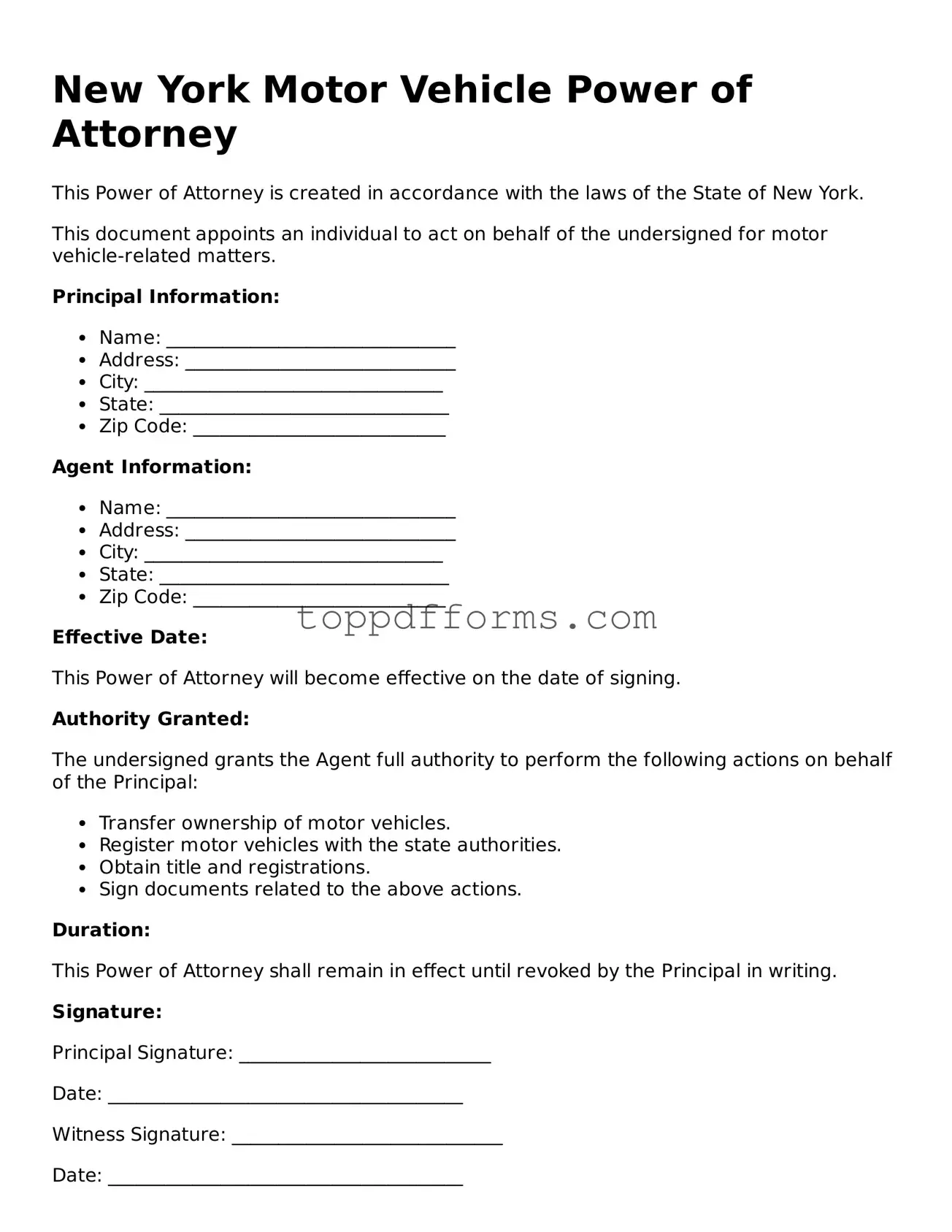What is the New York Motor Vehicle Power of Attorney form?
The New York Motor Vehicle Power of Attorney form allows an individual to designate another person to act on their behalf regarding motor vehicle transactions. This can include tasks such as transferring ownership, registering a vehicle, or obtaining title documents.
Who can be designated as an attorney-in-fact?
Any competent adult can be designated as an attorney-in-fact. This person can be a family member, friend, or any trusted individual who can handle the specified motor vehicle matters on your behalf.
Do I need to have the form notarized?
Yes, the form must be signed in the presence of a notary public. This adds a layer of authenticity and ensures that the document is legally binding.
How long is the Power of Attorney valid?
The Power of Attorney remains valid until you revoke it or until the specific tasks outlined in the document are completed. It is important to keep track of any changes in your circumstances that may require revocation.
Can I revoke the Power of Attorney?
Yes, you can revoke the Power of Attorney at any time. To do this, you should provide written notice to the attorney-in-fact and any relevant parties, such as the Department of Motor Vehicles (DMV).
What types of transactions can be handled with this form?
This form can be used for various transactions, including but not limited to transferring vehicle ownership, registering a vehicle, applying for a duplicate title, and submitting any required documents to the DMV.
Is there a fee associated with using the Power of Attorney?
While there is no fee specifically for completing the Power of Attorney form, there may be fees associated with the transactions you are authorizing, such as title transfers or registration fees at the DMV.
Can I use this form for out-of-state transactions?
This form is specifically designed for use in New York. If you need to handle motor vehicle transactions in another state, check that state's requirements for a similar Power of Attorney document.
What if my attorney-in-fact is unable to perform their duties?
If your designated attorney-in-fact is unable to fulfill their responsibilities, you may need to revoke the current Power of Attorney and designate a new attorney-in-fact. Make sure to notify all relevant parties of this change.
Where can I obtain the New York Motor Vehicle Power of Attorney form?
The form can be obtained from the New York Department of Motor Vehicles (DMV) website or at any DMV office. Ensure you have the most current version of the form to avoid any issues.
